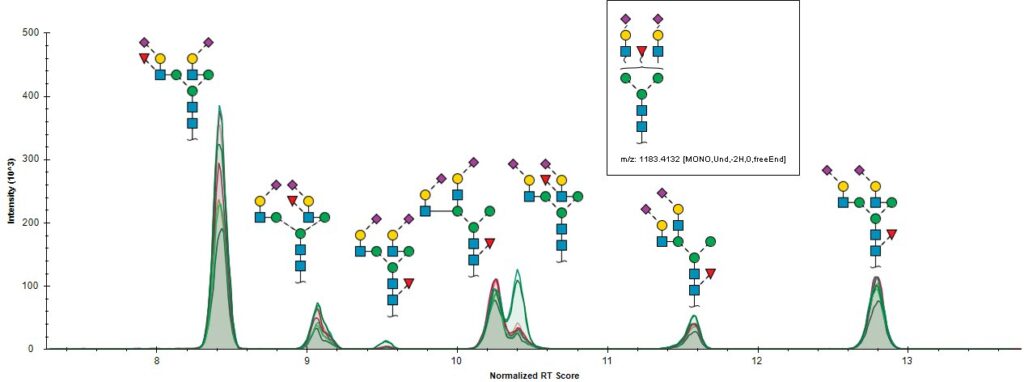Liquid chromatography (LC) is one of glycosylation’s greatest friends.
Glycans and polysaccharides exhibit remarkable diversity as a result of the numerous ways in which monosaccharide units can be connected to create elaborate structures. Beyond the varying linkages of a single polysaccharide, a given sample typically contains many similar structures. This greatly increases the analytical complexity of each sample and demands a high performance method to address this complexity.
Our unique liquid chromatography approach baseline separates 99% of isomeric glycans,
enabling structure-specific quantitation.
Liquid chromatography allows the separation of these complex mixtures into individual components based on their physical and chemical properties, such as size, charge, and hydrophobicity. Because glycans are so similar, high resolution LC is almost essential to separate these molecules prior to detection. Here, you can see isomeric N-glycan structures, with the exact same monosaccharide compositions and only differing by the position or linkage of these monosaccharides.

As well as enabling baseline glycan separation, liquid chromatography also provides retention time values which are informative for glycan structure identification and further glyco-informatic processes.
